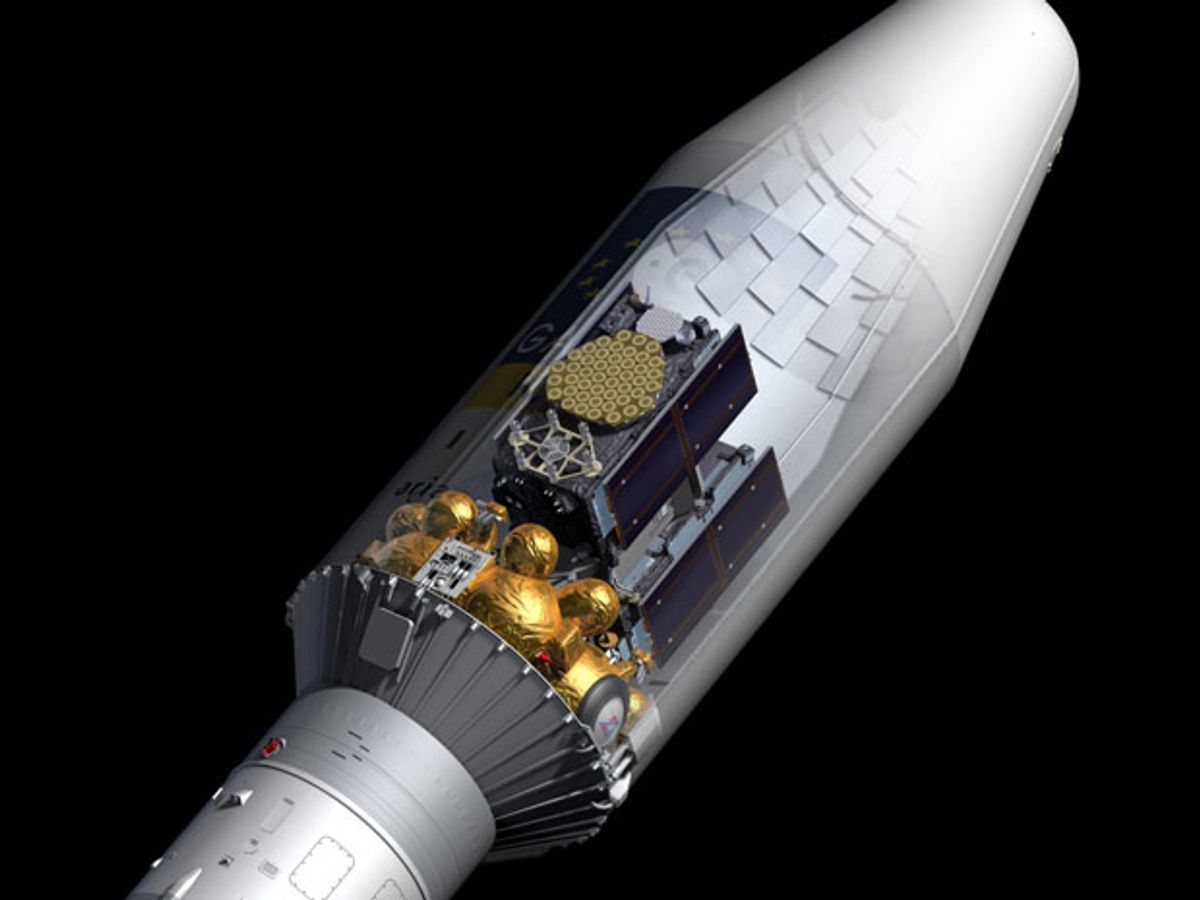
On 22 August, about 35 minutes after liftoff of a Soyuz rocket carrying the fifth and sixth satellites of Europe's ambitious 30-satellite navigation system Galileo, things went wrong. The upper stage, the Russian-built Fregat that carried the two spacecraft, injected them into the wrong orbits, making them unusable for their intended function as part of the navigation system.
At first blame fell on an error in the software controlling the Fregat's trajectory. But an inspection of the flight parameters clarified the situation: the two attitude control thrusters — small thrusters that keep the spacecraft and its propulsion engine pointed in the correct direction — failed to fire when they had to. "When a motor functions, and then stops functioning, it means that the fuel is no longer getting there," says Mario de Lépine, a spokesperson of Arianespace, who controlled the launch.
The fuel — hydrazine — didn’t reach the thrusters because it froze in its feed line, which was too close to another feed line carrying liquid helium. Both lines were mounted on a same support structure that, unfortunately, functioned as a thermal bridge cooling the hydrazine. The fault has also been discovered in other Fregat stages that are now under construction in Russia, and was apparently caused by ambiguities in the design documents of Fregat.
An Independent Inquiry Board announced the discovery of the fault at a meeting on 7 October at the Arianespace Headquarters in Evry, near Paris. The fault is easily corrected, and Stéphane Israël, Chairman and CEO of Arianespace, said after the meeting that he expects that its impact on the Galileo program will be small. "We are looking at the resumption of Soyuz launches from Guiana Space Center as early as December 2014."
However space engineers at the European Space Agency (ESA) aren't eager for the next launch to be to soon, says ESA spokesperson Dominique Detain. One of the reasons is that the two satellites, stranded in wrong orbits, can still earn back the expense of 150 million euro (US $190 million). "We are trying to recover the mission by doing tests on all their systems — as much as we can — to see how these satellites behave in space," says Detain.
"If we discover something wrong with the satellites, this could also be a fault in the other satellites. It is better to wait, until we have the confirmation that everything works, or we have information that something has to be fixed, before sending up the other ones," says Detain.
The timing of the next launch will be decided in the next few weeks. There are also more options. "The next launch will consist either of two satellites launched by a Soyuz, or four satellites with an Ariane-5," says Detain.



